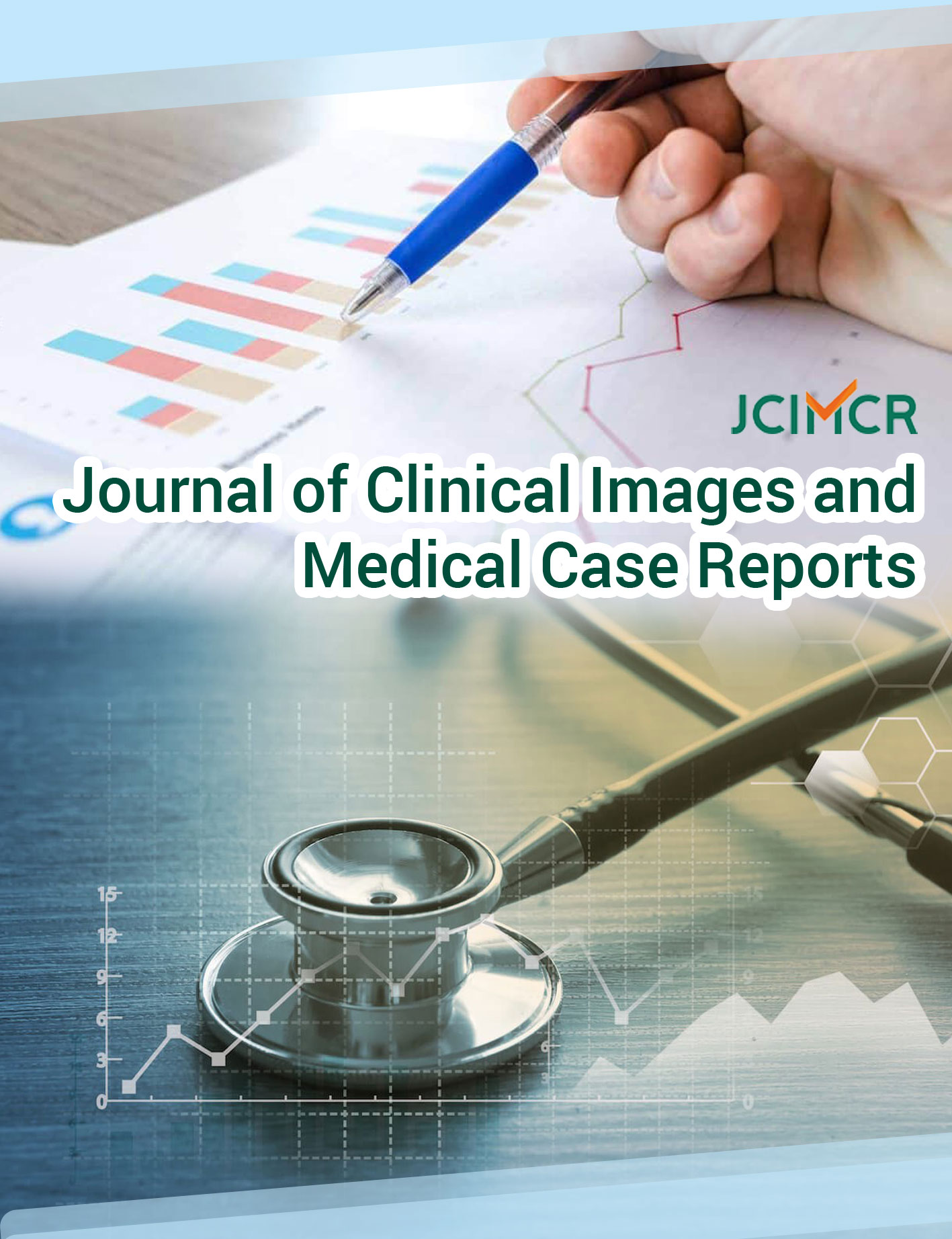
Journal of Clinical Images and Medical Case Reports
ISSN 2766-7820
Clinical Image - Open Access, Volume 5
Nevus of ota with pigmentation of buccal mucosa and lips
Laura Schreieder*; Veronika Zenderowski; Konstantin Drexler; Sebastian Haferkamp
Department of Dermatology, University Hospital Regensburg, Germany.
*Corresponding Author : Laura Schreieder
Department of Dermatology, University Hospital
Regensburg, Franz-Josef-Strauss-Allee 11, 93053
Regensburg, Germany.
Email: laura.schreieder@ukr.de
Received : Sep 20, 2024
Accepted : Oct 24, 2024
Published : Oct 31, 2024
Archived : www.jcimcr.org
Copyright : © Schreieder L (2024).
Abstract
Nevus of ota or oculodermal melanocytosis, is a benign condition characterized by blue or gray-brown hyperpigmentation, primarily distributed along the divisions of the trigeminal nerve. The pigmentation typically affects both the skin and ocular structures. In this report, we present a rare case of a female patient with oculodermal melanocytosis involving not only the skin and eye but also the buccal mucosa and lips.
Keywords: Oculodermal melanocytosis; Nevus of ota; Oral pigmentation.
Citation: Schreieder L, Zenderowski V, Drexler K, Haferkamp S. Nevus of ota with pigmentation of buccal mucosa and lips. J Clin Images Med Case Rep. 2024; 5(10): 3321.
Case description
A 54-year-old, Caucasian woman presented to the dermatology clinic for a routine skin cancer screening. The physical examination revealed an asymptomatic, unilateral, brown to blue-grey macule around her left eye (Figure 1, black arrows), along with dark brown pigmentation of the sclera (Figure 1, white arrows), both of which had been present since birth. The patient noted that, over the past few years, the periorbital discoloration had darkened slightly but had not increased in size. A full-body skin examination also revealed patchy, brown discoloration on the bilateral buccal mucosa and the lower lip (Figures 2,3). A comprehensive ophthalmic examination, including visual acuity testing, anterior and posterior segment evaluation and intraocular pressure measurements were normal.
Comment
Oculodermal Melanocytosis, also known as Nevus of ota, is a rare, dermal melanocytic condition. It predominantly affects females, with a male-to-female ratio of approximately 1:5. It is more frequently observed in individuals of Asian and African descent, with a prevalence as high as 0.6% reported in Japanese populations. Nevus of ota typically presents as blue-gray to brown hyperpigmentation involving the skin along the ophthalmic and maxillary divisions of the trigeminal nerve. This pigmentation often affects the periocular skin, uvea, sclera, and episclera, though it can extend to adjacent areas such as the forehead, temple, and nose [1].
Although the condition is usually congenital, it can present later in childhood or adolescence and may darken over time. While benign, Nevus of ota can be associated with ocular complications, including increased intraocular pressure, vision impairment, and a risk of developing uveal melanoma. Regular dermatological and ophthalmologic evaluations are essential for optimal management and monitoring.
Laser treatment, particularly using Q-switched lasers, is commonly employed for cosmetic improvement, providing significant lightening of pigmentation. However, the efficacy of treat- ment can vary based on factors such as the depth of pigment and the duration of the nevus.
In our case, the patient being of Caucasian descent is notable, as this is a rare occurrence. Additionally, oral pigmentation associated with Nevus of ota is infrequent compared to skin and ocular manifestations. According to the reviewed literature, only 55 cases of intraoral Nevus of ota have been reported [2,3]. The hard palate is the most commonly affected intraoral site, with pigmentation of the buccal mucosa described in 10 cases [2,4]. There has been only one case documented with bilateral buccal involvement and one case with pigmentation appearing on the lips [5], which makes our case a rarity.
Competing interests: The authors declared no potential conflicts of interest with respect to the research, authorship, and publication of this article.
References
- Fitzpatrick TB, Kitamura H, Kukita A, Zeller R. Ocular and dermal melanocytosis. AMA Arch Ophthalmol. 1956; 56(6): 830-2.
- Arun Dev Sharma, Ajay Pratap Singh Parihar, Prashanti Reddy, Nidhi Yadav, Rashi Mandlik. Intraoral Nevus of Ota: A Case Report and Review. Univ J Dent Sciences. 2023; 9(3): 65-8.
- JR Turnbull, Ch Assaf, ChC Zouboulis, B Tebbe. Bilateral naevus of Ota: A rare manifestation in a Caucasian. JEADV. 2004; 18(3): 353-5.
- Shetty SR, Subhas BG, Rao KA, Castellino R. Nevus of ota with buccal mucosal pigmentation: A rare case. Dent Res J (Isfahan). 2011; 8(1): 52-55.
- Akira Hidano, Hideo Kajima, Yooko Endo. Bilateral Nevus Ota Associated With Nevus Ito: A Case of Pigmentation on the Lips. Arch Dermat. 1965; 91: 357-9.
